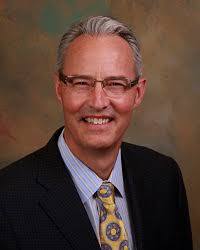
The U.S. Food and Drug Administration approved an innovative treatment for scoliosis last week and it happens to have a fancy nickname.
It’s called The Tether and it provides a fusion-less alternative for young patients requiring surgery.
The Tether is produced by Zimmer Biomet Holdings Inc,, which touts itself as a global leader in musculoskeletal health care.
The current treatment for scoliosis involves an operation with large incisions, extensive soft tissue disruption and restriction of spinal motion with metal rods inserted along both sides of the spine to secure and align the vertebrae, according to a press release.

Peter O. Newton, MD, the chief of orthopedic surgery at the Rady Children's Hospital in San Diego and the president of the Scoliosis Research Society
"The Tether uses a strong, flexible cord, rather than metal rods, to pull on the outside of a scoliosis curve to initially straighten the spine, while the inside of the curve is left free to grow,’’ according to the press release.’’This growth modulation approach now offers select, well-indicated patients an option to achieve a straighter spine, without the limitations of spinal fusion. Additionally, unlike fusion metallic rods, The Tether is positioned utilizing an endoscopic minimally invasive approach through a few small openings between the ribs.’’
Peter O. Newton, MD, the chief of orthopedic surgery at the Rady Children's Hospital in San Diego and the president of the Scoliosis Research Society, weighed in.
“The approval of 'The Tether' under the HDE pathway is a clear step forward in the journey to advance scoliosis care in the hope of bringing non-fusion solutions to the management of progressive scoliosis in growing patients," Newton said. "There have been decades of research into the mechanical modulation of spinal growth which demonstrate the potential to use a scoliosis patient’s remaining growth to drive correction of their spinal deformity.’
"I am confident in the FDA’s determination that there is 'probable benefit,' and further clinical experience (data) will be required to refine the indications and surgical techniques to make this a consistent and reliable means of correcting scoliosis without a spinal fusion (the current gold standard for severe scoliosis)," Newton said.
Newton said the treatment of scoliosis results in challenges for children and adolescents with the disease.
"Recent evidence that confirms the benefits of wearing a scoliosis brace in preventing progression of scoliosis during the adolescent growth spurt is clear: however, the ideal brace design and issues of compliance are barriers for some," Newton said. "Surgical options (until recently) have included a spinal fusion that eliminates some the trunk motion - the effects of which may be negligible or substantial depending on the extent of the fusion. As we investigate new non-fusion approaches, it will remain important to make functional comparisons to the gold standard treatment which remains, an instrumented spinal fusion."
Newton said it is important to understand that “The Tether” was approved only for skeletally immature patients and those that failed (or could not tolerate) brace treatment.
"In my view, brace treatment should remain the first line approach of progressive scoliosis of 25 to 45 degrees. The rationale for tethering depends on the device altering the growth of the spinal column in ways that will result in lasting deformity correction. How much growth, and for which sized curves, will be the topics of much future research on this approach to correcting progressive scoliosis," Newton said.
The Zimmer Biomet president said the key was working together with other entities.
"The Tether embodies Zimmer Biomet's mission to improve the quality of life for people around the world. This collaboration demonstrates how a focused, shared purpose can fundamentally change the way we approach treatment of diseases like scoliosis," said Jim Cloar, president of Zimmer Biomet Spine. "Working together, clinicians, the FDA and Zimmer Biomet have given surgeons an important fusion-less scoliosis treatment option for their pediatric patients. This procedure gives kids the best option for maintaining spine mobility and reaching their full potential."




